You may have examined things like keyword integration or mobile-friendliness before, but without context, those phrases might not have given you a transparent sense of direction for your SEO.
Having some samples of SEO can assist you to see what various tactics appear as if in practice. thereto end, here are six of the simplest SEO examples to inspire your own online marketing!
1. Long-tail keyword integration
Keywords are one of the foremost essential components of SEO. By incorporating keywords into your written web page, you’ll communicate to Google which searches your content is most relevant to, helping it rank for them.
Specifically, you ought to aim for long-tail keywords — that’s, people who are several words long. Longer keywords tend to be more specific, meaning you’ll reach a more relevant audience and face less competition from other businesses.
Aireserv provides a great example of this in their content.
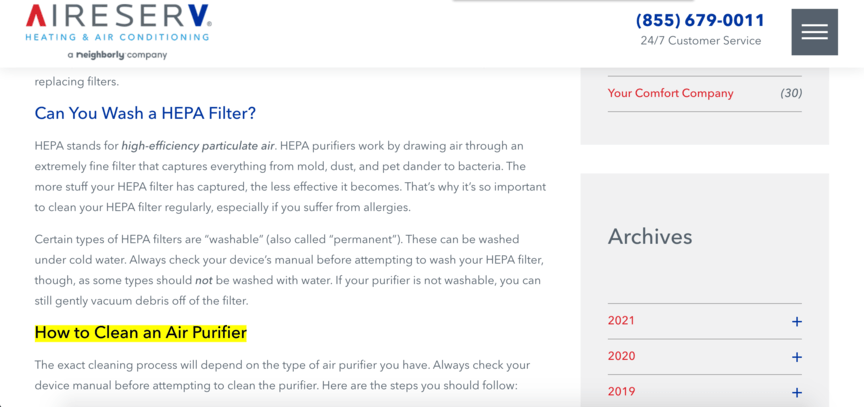
one of their blog posts on cleaning air purifiers, they didn’t simply target a short keyword like “air filter†— they went after the long-tail keyword “how to clean an air purifier,†which they included in both the title and subheading of the piece.
As a result, their article holds the top spot in Google rankings for that keyword!

2. White space
Visual design is one of the first contributors to the general user experience on your website. If your site features a poor appearance, users won’t want to remain thereon. And when users keep clicking away, that tells Google to rank you lower.
The visual design consists of varied elements, including everything from color schemes to page structure. But one of the most visual elements on a site is white space.
White space is just the space on a page that isn’t haunted by text, images, or other visual elements. Imagine the difference between a page completely full of text and a page choppy into small blurbs and paragraphs. which might you rather read? Probably the latter.
Sun Auto Service demonstrates this principle seamlessly in their written web content.
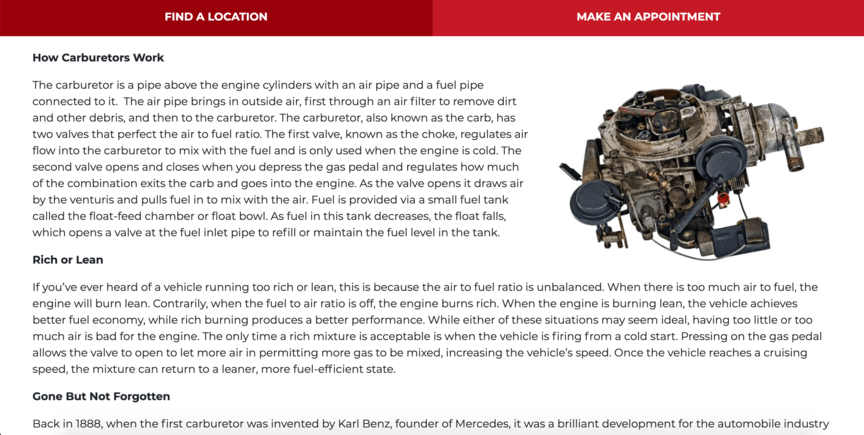
In their informational pieces, they make sure to break up text into small sections. With headings, images, and white space inserted between the paragraphs, it makes things feel far less cluttered, leading to easier reading and happier users.
3. Compelling title tag and meta description
SEO starts with getting your content ranking in Google, but it doesn’t stop there.
Once your content is ranking, you’ve got to convince users that your site is that the result they ought to click. If you don’t, you won’t stay high in rankings for long ago Google will assume your site isn’t valuable to users.
To gain clicks, you would like to offer each of your pages a compelling title tag and meta description, which together structure the blurb that appears in search results. The title and meta should make it clear what your business is offering and why users should click.
The Exterminator in Wyoming does a fantastic job with this tactic.

Their title tag makes it clear what they do and where they operate. Their meta description, meanwhile, provides a compelling call to action (CTA) and highlights their “years of experience.â€
4. Reputable backlinks
When Google ranks your site, one among the items it considers is how reputable you’re. If Google views your site as authoritative in your industry, it’ll rank you higher — and one of the simplest ways to look more reputable is to earn backlinks.
Backlinks are simply where reputable sites in your industry link to your content. When Google sees a known authoritative site linking to you, it assumes you’re authoritative too and ranks you higher.
To earn backlinks, you’ll search for broken links on reputable sites in your industry and recommend that the location replace them with new links to your content.
Sweetwater offers one of the most impressive examples of SEO in this regard.
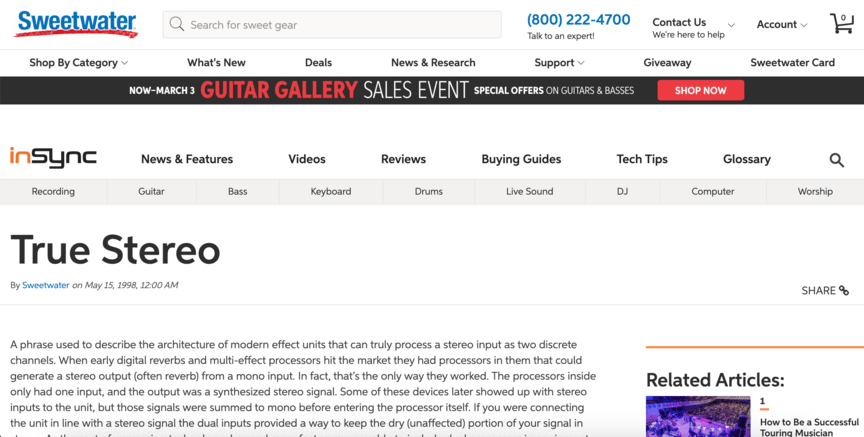
A short piece on their website entitled “True Stereo†earned a backlink from Wikipedia, which lists it as a reference on its “Stereophonic Sound†page.

While Wikipedia links are NoFollow — which means they don’t directly impact rankings like most backlinks — the fact that Google consistently ranks Wikipedia so high in search results still benefits Sweetwater significantly, since visitors to that page may encounter the link.
It’s no coincidence that that same Sweetwater piece ranks on page one for the keyword “true stereo!â€
5. Fast page speeds
Did you recognize that 83% of users expect pages to load in three seconds or less? If your site doesn’t meet this expectation, you’ll have quite a few users bouncing from your site — which can tell Google that your site isn’t useful to them, causing it to rank lower.
To improve your page speeds, you’ll implement techniques like:
- Compressing images
- Caching web pages
- Limiting redirects
You can check your website’s page speeds on Google’s PageSpeed Insights tool, which will give it a score between zero and 100. For an example of a site that’s managed to achieve an impressively high score, we can look at USA Flooring.
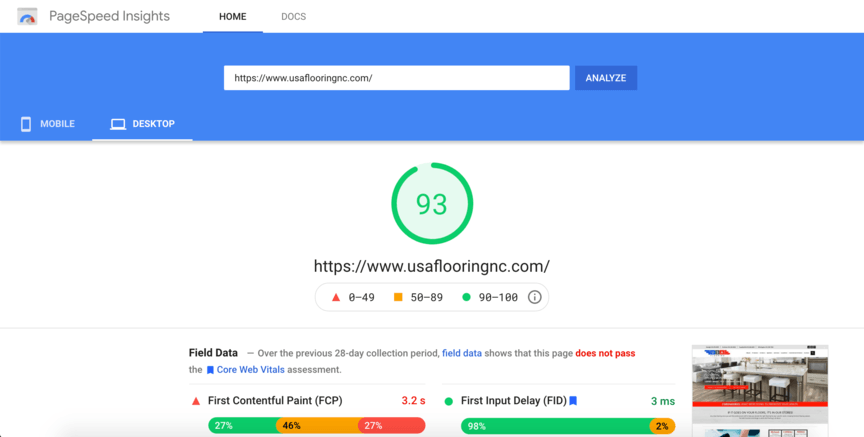
USA Flooring’s desktop site earns a 93 in PageSpeed Insights, meaning they probably don’t see many users jump ship during the loading process.
6. Responsive design
With over 50% of all Internet traffic coming from mobile devices, it’s no surprise that Google’s algorithms prioritize mobile-friendly websites. Without mobile friendliness, not only will mobile users not stay on your site, but Google will penalize you in rankings.
To stay high in rankings, you should practice responsive design on your site. Responsive design refers to a type of web design where your site changes its layout to fit whatever screen it appears on.
One of the best SEO examples of responsive design comes from Ravensburger.
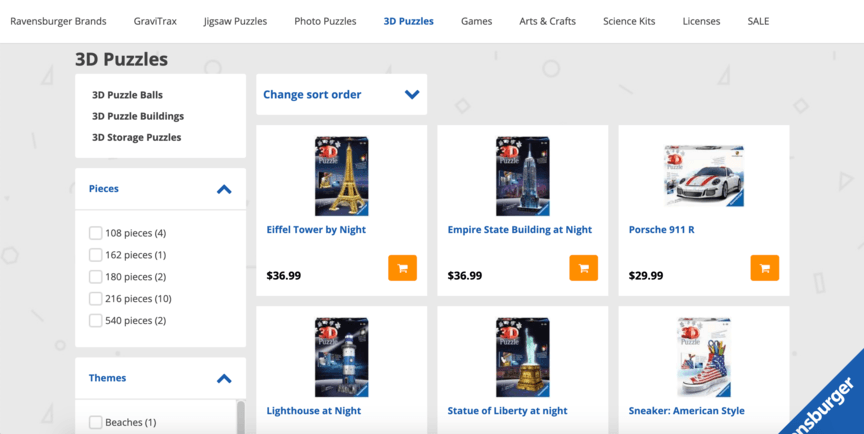
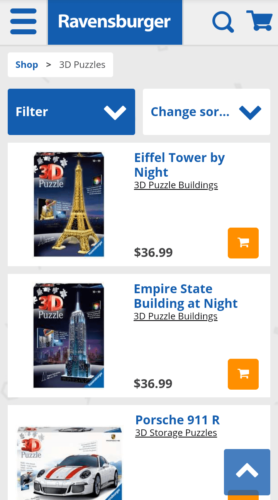
On a computer screen, Ravensburger’s online store displays their products in a grid formation, with three products per row. A phone screen is vertically oriented, however, so the store’s mobile version lists the products in a single column running down the page.





